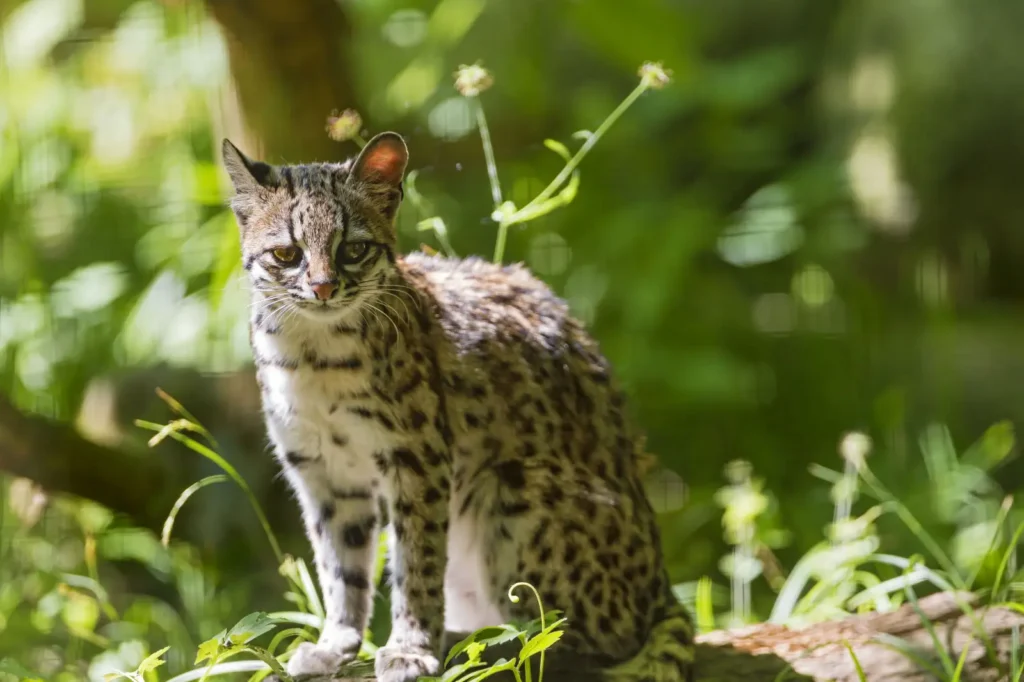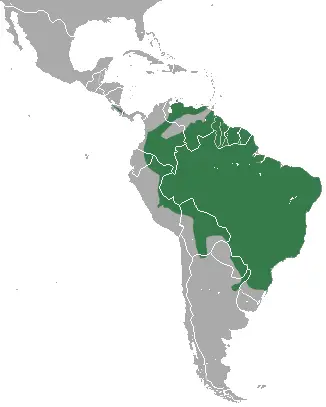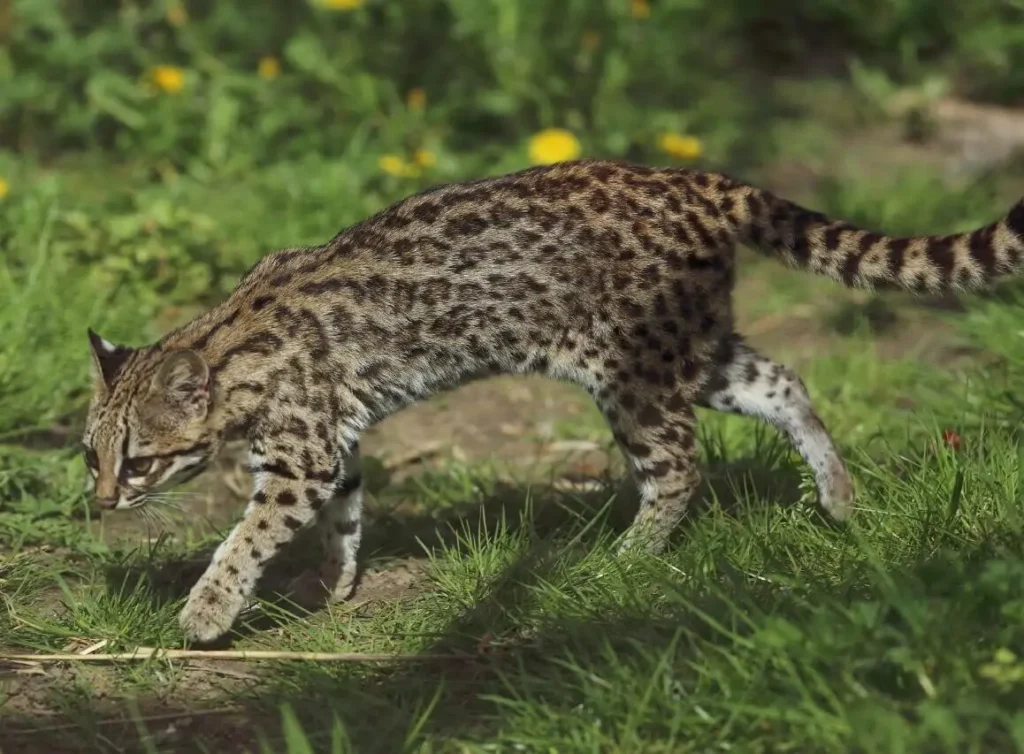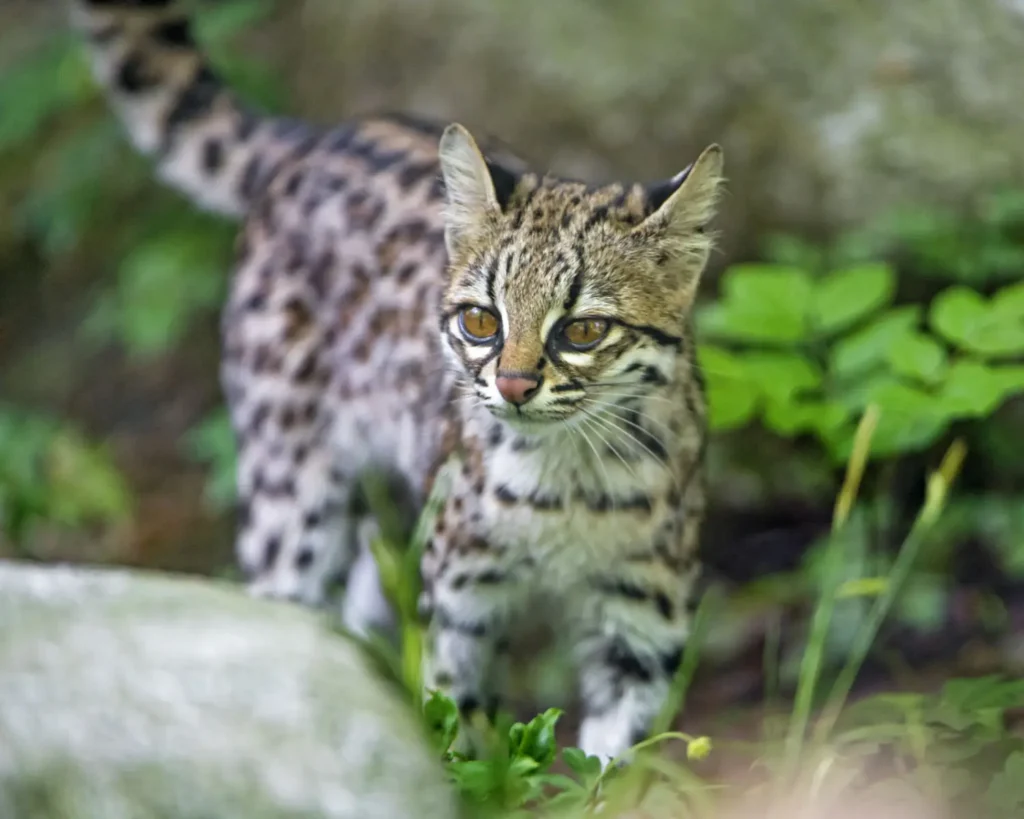Oncila (Leopardus tigrinus), also known as tiger catis a small wild cat native to South America. It is often confused with the margay (Leopardus wiedii) and ocelot (Leopardus pardalis), but the oncila is smaller than them and has its own unique characteristics. It is nocturnal, excellent at climbing trees, and has excellent eyesight and hearing, which helps it hunt in the dense jungle.

Classification and scientific name
• The Kingdom: Animals (Animalia)
• Type: Chordal (Chordata)
• Class: Mammals (Mammalia)
• Row: Predatory animals (Carnivora)
• Family: The cat (Felidae)
• Gender: Leopards (Leopardus)
• View: Oncila (Leopardus tigrinus)
Physical characteristics
Dimensions and weight
📌 Body length: 38-59 cm
📌 Tail length: 20-42 cm
📌 Weight: 1.5-3 kg
Color and fur
✔ Main coat color: from light yellow to reddish brown
✔ Dark spots and streaks: resemble the color of a leopard
✔ Abdomen: lighter, creamy white
✔ Tail: long, fluffy, with dark rings
🖤 Melanism - There are black individuals among oncids, but they are rare.

Range and habitat
🔵 Spread
Oncilla lives in South America, particularly in:
- Brazil
- Venezuela
- Colombia
- Ecuador
* Peru
- Bolivia
- Gayani
- Paraguay
🔴 Living environment
✔ Tropical rain forests
✔ Mountain forests (up to 3000 m above sea level)
✔ Savannas and shrubs
Humid lowland jungle
Oncils are well adapted to life in dense thickets, where they can easily hide from predators.

Lifestyle and behavior
🌙 Nocturnal predator
The oncilla is active at night and at dusk. During the day, it hides in dense vegetation, trees or caves.
🧍♂️ Solo lifestyle
These cats lead solitary lifestyle and meet only during the mating season.
🌲 A great climber
Oncils can easily climb trees and can hunt both on the ground and in the crowns of trees.
Food and hunting
🍖 Carnivorous diet
Oncilla are skillful hunters and foragers:
✔ Small rodents (mice, rats)
✔ Birds and their eggs
✔ Reptiles (lizards, snakes)
Insects (beetles, grasshoppers)
💡 Hunting methods
- They sneak up on the victim and attack with lightning speed
- Use their strong paws and sharp teeth to make a quick kill
- Sometimes they can hide their prey in trees
Reproduction and life cycle
❤️ Mating season: mainly in spring
❤️ Pregnancy: 75-78 days
❤️ Number of children: 1-3 kittens
❤️ Puberty: 2 years
👶 Kittens are born blind but develop quickly.
👩👧 The female raises them on her own, taking care of them for 3-4 months.
🧬 Life span: 10-15 years in the wild, up to 20 years in captivity.

Natural enemies and threats
🔴 Birds of prey and animals
✔ Jaguars
✔ Ocelots
✔ Large boas
Eagles and other birds of prey
🔴 Threats from humans
✔ Forest cutting - the main reason for the population decline
✔ Hunting for fur (in the past)
✔ Poaching
Protected status and rescue efforts
🟢 Security status:
🔹 International Union for Conservation of Nature (IUCN) classifies oncilla as "vulnerable species" (Vulnerable, VU) due to the reduction of its natural habitat.
🟢 Security measures:
✔ Creation of protected areas
✔ Prohibition of commercial hunting
✔ Control of poaching
Oncilla in culture and symbolism
✨ Mystical and graceful
In some South American cultures, oncilla is associated with grace, cunning, and speed.
🎭 A rare hero of myths
Unlike the jaguar, the oncilla does not appear as often in mythology, but its image can be found in stories about forest spirits.
📺 Popularity in contemporary art
The oncilla is not as well known as the ocelot or the jaguar, but its image can be found in illustrations, drawings, and even logos.
Conclusion
The oncilla is an extremely interesting and beautiful wild cat of South America. Thanks to its spotted coloration, excellent adaptation to the forest environment, and skillful hunting, it is one of the most skillful small carnivores in the rainforest. However, due to deforestation and human threats, its population is declining, making conservation efforts extremely important.
